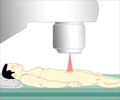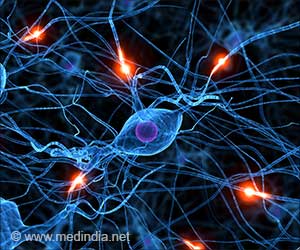Men with “low risk” prostate cancer who miss more than two radiation treatments in an eight-week treatment have increased chances of cancer recurrence.
Men with “low risk” prostate cancer who miss more than two radiation treatments in an eight-week treatment have increased chances of cancer recurrence. A new study examining more than 15 years of data and nearly 1,800 patients treated at Fox Chase Cancer Center in Philadelphia presented the results at the American Society for Therapeutic Radiology and Oncology’s 49th Annual Meeting in Los Angeles.
As radiation doses are escalated, overall treatment time has expanded for prostate cancer. A typical course of external beam therapy such as IMRT is about five days a week for eight weeks.“Eight weeks of treatment is a significant time commitment. As the treatment times continue to increase, the potential for missed treatments increases,” said David J. D'Ambrosio, M.D., a resident in the Department of Radiation Oncology at Fox Chase Cancer Center in Philadelphia.
For the study, D’Ambrosio and his colleagues examined the records of 1,796 men treated with external beam radiation between 1989 and 2004. A majority of patients (1,362) received 3D conformal radiation therapy while about a quarter (434) received IMRT, intensity modulated radiation therapy. The men were divided into three groups: low risk, intermediate risk and high risk.
“Our findings show that when men with low risk prostate cancer miss more than two r treatment days over eight weeks, their risk of the cancer recurring increases,” D’Ambrosio said. “This highlights the importance of finishing treatment without breaks, once it has begun.”
Researchers used a ratio for non-treatment days to examine the rate of biochemical failure (recurrence of the cancer based on a rising PSA level). The 10 year rate of biochemical failure in the low risk group was 18 percent when patients had a low non-treatment day ratio versus 43 percent when the patient had a higher non-treatment day ratio (p=0.0019). The significance remained even when the data were analyzed using the absolute number of non-treatment days instead of our non-treatment days ratio, D’Ambrosio said.
“Of the three risk groups, we found a greater pronouncement of biochemical failure among the group at lowest risk. We believe that in the low risk group, controlling cancer in the prostate and keeping it from spreading outside of the prostate makes the greatest difference for these patients. In this study, for men with high and intermediate risk cancers, two days of missed treatment did not seem to have as great an impact. Despite this, treatment breaks are still to be discouraged.”
Advertisement
GAN/C






![Prostate Specific Antigen [PSA] Prostate Specific Antigen [PSA]](https://www.medindia.net/images/common/patientinfo/120_100/prostate-specific-antigen.jpg)




